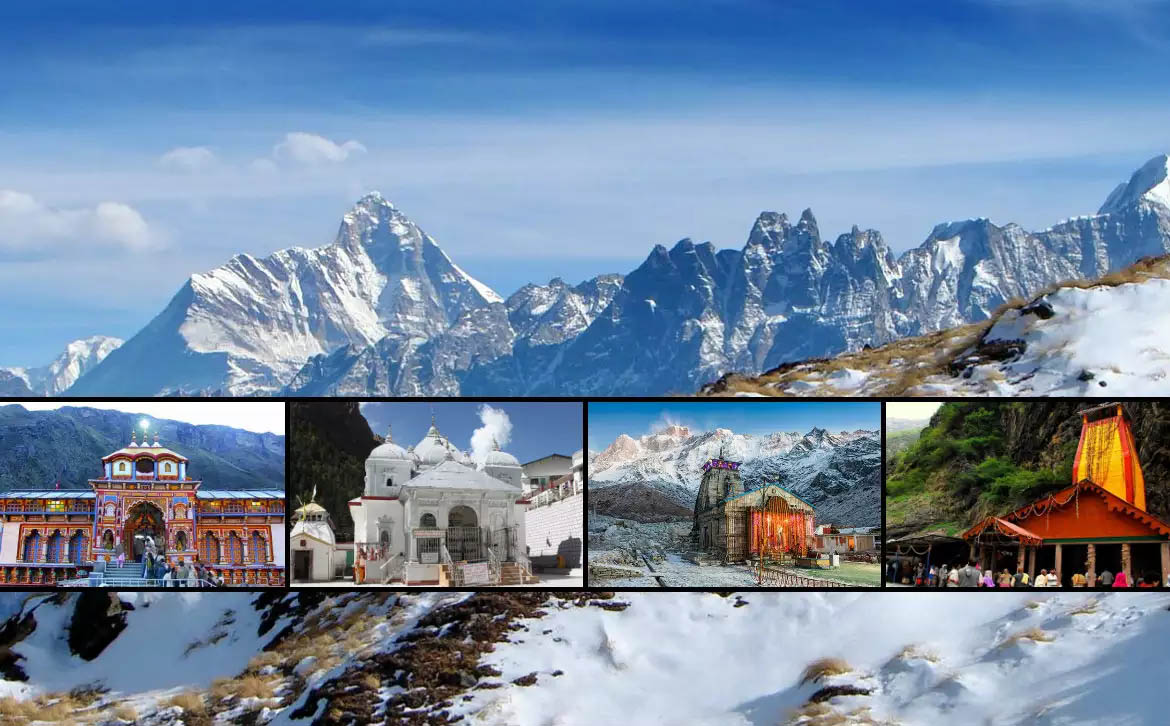Panch Kedar, Uttarakhand – Tour Venture India

Panch Kedar Overview
The Panch Kedar refers to a collection of five sacred temples dedicated to Lord Shiva, located in the Garhwal region of Uttarakhand, India. and Kalpeshwar. Let’s take a closer look at each of these temples:
1. Kedarnath
Kedarnath is the most prominent among the Panch Kedar temples. It’s The temple comprises a ‘Garbha Griha’ (sanctum) and a ‘Mandap’ (assembly hall). chardham tour packages It has a rich history and has been restored multiple times.
How to Reach Kedarnath: A 14 km trek from Gaurikund. Best Time to Visit Kedarnath: May to June and September to October.
2. Tungnath
Tungnath, the highest temple dedicated to Lord Shiva in the world, stands at an altitude of 3,680 meters. This temple represents the place where the arms of Shiva appeared. It’s a small temple with a unique architectural style, surrounded by beautiful peaks like Nanda Devi and Neelkanth. The temple features a distinct black rock symbolizing Shiva’s arms, and its limited size creates an intimate atmosphere.
How to Reach Tungnath: A 4 km trek from Chopta in the Rudraprayag district. Best Time to Visit Tungnath: April to November.
3. Rudranath
Rudranath temple, located at an altitude of 2,286 meters, is known for its natural rock formation representing the face of Shiva. chardham yatra package 2025 It’s surrounded by alpine meadows and dense rhododendron forests, making it one of the more challenging treks among the Panch Kedar. This temple’s priests belong to the Dasnamis and Gosains sects.
How to Reach Rudranath: A 20 km trek from Gopeshwar in the Chamoli district. Best Time to Visit Rudranath: May to October.
4. Madhyamaheshwar
Madhyamaheshwar, where the navel of Shiva appeared, is located at an altitude of 3,289 meters in the Mansoona village of the Garhwal Himalayas. This temple’s architecture features a Shiva linga shaped like a navel. The surrounding landscape is breathtaking, and there are additional shrines dedicated to Parvati and Ardhanarishvara.
How to Reach Madhyamaheshwar: A 19 km trek from Uniana. Best Time to Visit Madhyamaheshwar: May to October.
5. Kalpeshwar
Kalpeshwar, the final temple in the Panch Kedar circuit, is situated in the Urgam Valley at an altitude of 2,200 meters. This temple represents the hair of Shiva. Its unique granite stone structure features an enormous tower and a veranda with a massive brass bell hanging from a stone pillar.
How to Reach Kalpeshwar: A short trek from Urgam, near the Rishikesh-Badrinath road. Best Time to Visit Kalpeshwar: May to June and September to October.
The Panch Kedar circuit offers a unique blend of spirituality, history, and breathtaking natural beauty. Each temple has its own legend, architectural style, and significance, attracting pilgrims and adventure-seekers from around the world.
Panch Kedar: A Brief Overview
The Panch Kedar comprises five esteemed temples devoted to Lord Shiva, situated in the Garhwal region of Uttarakhand, India. These temples form an integral part of a sacred pilgrimage circuit and hold profound religious significance in Hinduism. They are traditionally visited in a prescribed sequence: Kedarnath, Tungnath, Rudranath, Madhyamaheshwar, and Kalpeshwar. The lore surrounding these temples is steeped in the Mahabharata, attributing their construction to the Pandavas as an act of penance. Here’s a concise rundown of each of the Panch Kedar temples:
1. Kedarnath:
Situated at an elevation of 3,583 meters in the Rudraprayag district, Kedarnath stands as the most prominent of the Panch Kedar temples. It is believed to have been founded by Adi Shankaracharya in the 8th or 9th century A.D. The temple features a conical Shiva lingam symbolizing the hump of a bull and boasts a thousand-year-old architecture characterized by meticulously carved grey stone slabs. Inside, visitors find a ‘Garbha Griha’ and a ‘Mandap.’ The temple has undergone numerous renovations over the centuries, preserving its rich history and architectural significance.
**How to Reach Kedarnath:** A 14 km trek from Gaurikund.
**Best Time to Visit Kedarnath:** May to June and September to October.
2. Tungnath:
Tungnath, nestled at an altitude of 3,680 meters, holds the distinction of being the world’s highest Shiva temple. The temple’s architectural charm lies in its compact size and the presence of surrounding small shrines.
**How to Reach Tungnath:** A 4 km trek from Chopta.
**Best Time to Visit Tungnath:** April to November.
3. Rudranath:
Perched at an altitude of 2,286 meters, Rudranath temple boasts a distinctive natural rock formation, believed to represent the bull’s face. Surrounded by alpine meadows and dense rhododendron forests, reaching Rudranath involves traversing one of the more challenging treks among the Panch Kedar temples.
**How to Reach Rudranath:** The trek starts from Gopeshwar and spans approximately 20 km.
**Best Time to Visit Rudranath:** May to October.
4. Madhyamaheshwar:
Madhyamaheshwar, situated at 3,289 meters in the Mansoona village of the Garhwal Himalayas, marks the spot where the bull’s navel emerged. Additional shrines dedicated to Parvati and Ardhanarishvara enhance its spiritual allure.
**How to Reach Madhyamaheshwar:** The trek commences from Uniana, covering a 19 km route.
**Best Time to Visit Madhyamaheshwar:** May to October.
5. Kalpeshwar:
The temple’s architecture, featuring a unique granite stone structure in the Nagara style, includes an imposing tower, a veranda, and a sizable brass bell suspended from a stone pillar.
**How to Reach Kalpeshwar:** Accessible via a short trek from Urgam, near the Rishikesh-Badrinath road.
**Best Time to Visit Kalpeshwar:** May to June and September to October.
The Panch Kedar pilgrimage offers a blend of spiritual devotion, historical resonance, and natural splendor. Each temple narrates a distinct tale and showcases unique architectural motifs against the backdrop of awe-inspiring landscapes. These sacred sites serve as significant pilgrimage destinations, drawing devotees worldwide in search of spiritual enlightenment and adventurous exploration.





